During the summer months, Lake Erie along with the rest of the five Great Lakes smothers under huge swaths of green algae, often thousands of square kilometers in size. The algae proliferates by feeding on excess nutrients in the form of phosphorous in the water. The phosphorus comes from sewage treatment plants and fertilizer used in farms that runoff along with rain water and enter into streams and rivers eventually winding up in Lake Erie. Blue-green algae also thrives on light. Lake Erie, being the shallowest of the Great Lakes, especially at its west end, is more susceptible to algae than its deeper cousins, which do not have the same penetration of sunlight.
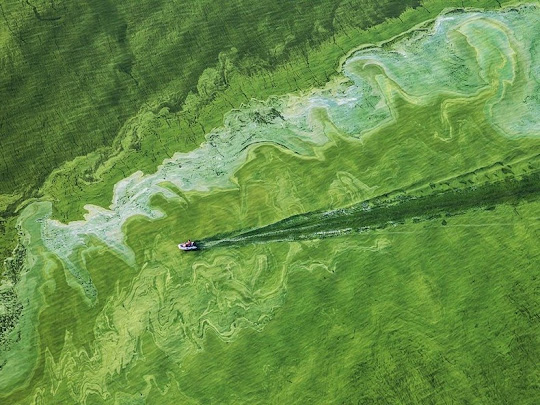
The algae float on the surface and multiply rapidly, and when they die, they sink to the bottom of the lake, where they decay and absorb the oxygen in the water creating dead zones where most aquatic animals cannot survive. Hundreds of thousands of dead fish washed up on Erie’s shores during 2011 when the lake saw the biggest algae bloom in recorded history. The blue-green algae invaded Lake Erie covering as much as one-sixth of the surface, extending from Toledo, Ohio to beyond Cleveland and along the Ontario shore. It extended over 20 kilometers from the shores, and in the central basin it was observed at a depth of at least 60 feet.
Not all types of algae are destructive, but the bloom is primarily microcystis aeruginosa, an algae that is toxic to mammals. Microcystis aeruginosa produces a liver toxin, microcystin, that commonly kills dogs swimming in infected water and causes skin irritation, respiratory difficulty and gastrointestinal distress in humans.
Algae blooms were common in the lake’s shallow western basin in the 1950s and 60s. Phosphorus from farms, sewage, and industry fertilized the waters so that huge algae blooms developed year after year. The blooms subsided a bit starting in the 1970s, when regulations and improvements in agriculture and sewage treatment limited the amount of phosphorus that reached the lake. But the problem has resurfaced in recent years.
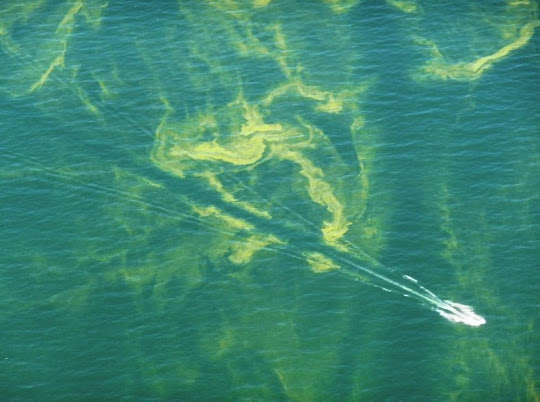
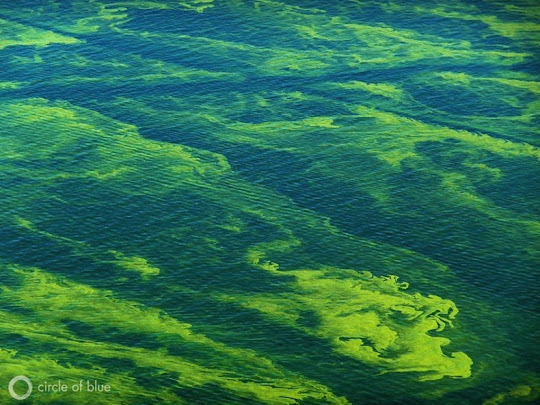
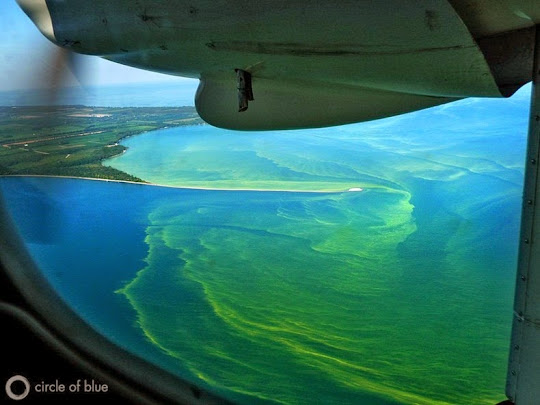
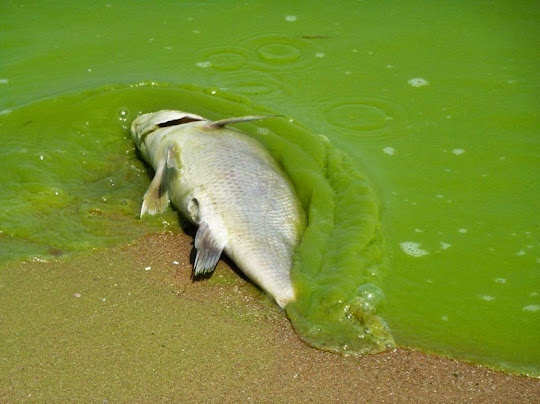

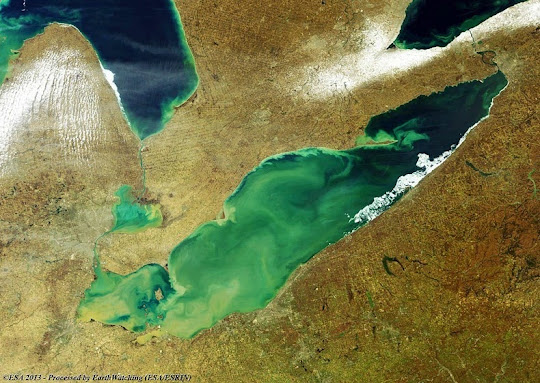
Satellite image of Lake Erie taken in 2003.
Source
